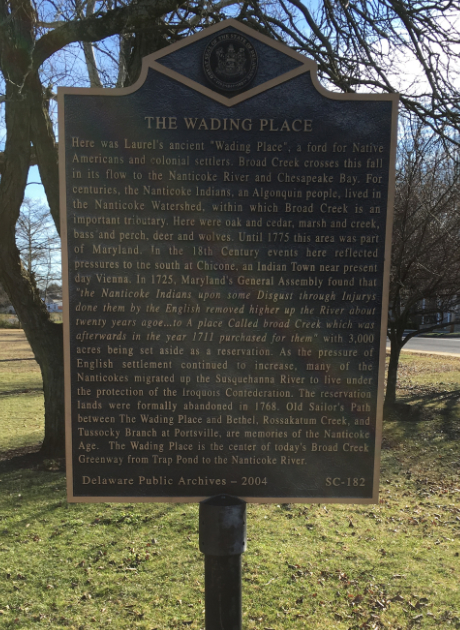
 SC-182: originally installed in 2004.
SC-182: originally installed in 2004.
Here was Laurel’s ancient “Wading Place”, a ford for Native Americans and colonial settlers. Broad Creek crosses this fall in its flow to the Nanticoke River and the Chesapeake Bay. For centuries, the Nanticoke Indians, an Algonquin people, lived in the Nanticoke Watershed, within which Broad Creek is an important tributary. Here were oak and cedar, marsh and creek, bass and perch, deer and wolves. Until 1775 this area was part of Maryland. In the 18th Century events here reflected pressures to the south at Chicone, an Indian Town near present-day Vienna. In 1725, Maryland’s General Assembly found that “the Nanticoke Indians upon some Disgust through Injurys done them by the English removed higher up the River about twenty years agoe…to A place Called broad Creek which was afterwards in the year 1711 purchased for them” with 3,000 acres being set aside as a reservation. As the pressure of English settlement continued to increase, many of the Nanticokes migrated up the Susquehanna River to live under the protection of the Iroquois Confederation. The reservation lands were formally abandoned in 1768. Old Sailor’s Path between The Wading Place and Bethel, Rossakatum Creek, and Tussocky Branch at Portsville, are memories of the Nanticoke Age. The Wading Place is the center of today’s Broad Creek Greenway from Trap Pond to the Nanticoke River.
Location: near the intersection of Delaware Ave. and Front Street on SE side of the bridge over Broad Creek Laurel, DE 19956